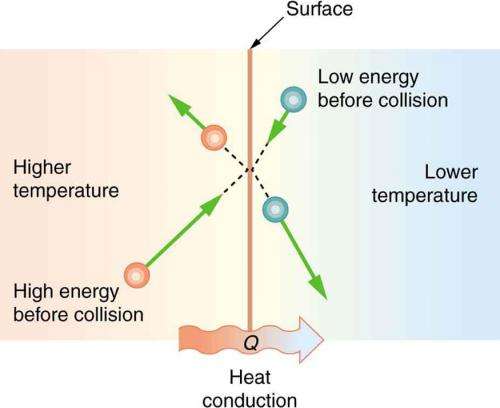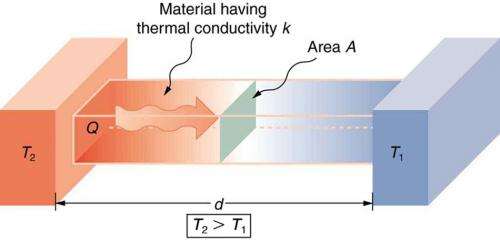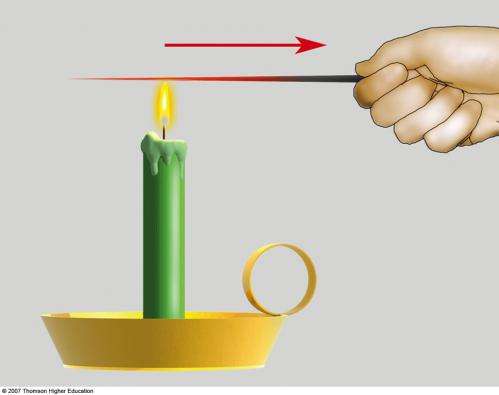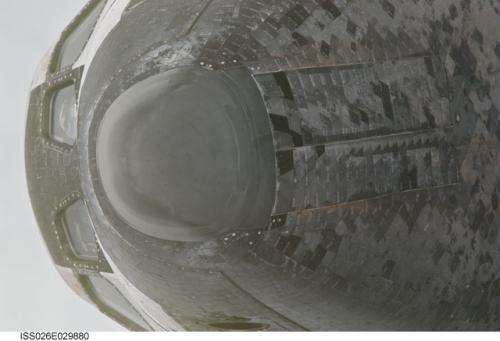What is heat conduction?

Heat is an interesting form of energy. Not only does it sustain life, make us comfortable and help us prepare our food, but understanding its properties is key to many fields of scientific research. For example, knowing how heat is transferred and the degree to which different materials can exchange thermal energy governs everything from building heaters and understanding seasonal change to sending ships into space.
Heat can only be transferred through three means: conduction, convection and radiation. Of these, conduction is perhaps the most common, and occurs regularly in nature. In short, it is the transfer of heat through physical contact. It occurs when you press your hand onto a window pane, when you place a pot of water on an active element, and when you place an iron in the fire.
This transfer occurs at the molecular level—from one body to another—when heat energy is absorbed by a surface and causes the molecules of that surface to move more quickly. In the process, they bump into their neighbors and transfer the energy to them, a process which continues as long as heat is still being added.
The process of heat conduction depends on four basic factors: the temperature gradient, the cross section of the materials involved, their path length, and the properties of those materials.
A temperature gradient is a physical quantity that describes in which direction and at what rate the temperature changes in a specific location. Temperature always flows from the hottest to coldest source, due to the fact that cold is nothing but the absence of heat energy. This transfer between bodies continues until the temperature difference decays, and a state known as thermal equilibrium occurs.
Cross-section and path length are also important factors. The greater the size of the material involved in the transfer, the more heat is needed to warm it. Also, the more surface area that is exposed to open air, the greater likelihood for heat loss. So shorter objects with a smaller cross-section are the best means of minimizing the loss of heat energy.

Last, but certainly not least, is the physical properties of the materials involved. Basically, when it comes to conducting heat, not all substances are created equal. Metals and stone are considered good conductors since they can speedily transfer heat, whereas materials like wood, paper, air, and cloth are poor conductors of heat.
These conductive properties are rated based on a "coefficient" which is measured relative to silver. In this respect, silver has a coefficient of heat conduction of 100, whereas other materials are ranked lower. These include copper (92), iron (11), water (0.12), and wood (0.03). At the opposite end of the spectrum is a perfect vacuum, which is incapable of conducting heat, and is therefore ranked at zero.
Materials that are poor conductors of heat are called insulators. Air, which has a conduction coefficient of .006, is an exceptional insulator because it is capable of being contained within an enclosed space. This is why artificial insulators make use of air compartments, such as double-pane glass windows which are used for cutting heating bills. Basically, they act as buffers against heat loss.
Feather, fur, and natural fibers are all examples of natural insulators. These are materials that allows birds, mammals and human beings to stay warm. Sea otters, for example, live in ocean waters that are often very cold and their luxuriously thick fur keeps them warm. Other sea mammals like sea lions, whales and penguins rely on thick layers of fat (aka. blubber) – a very poor conductor – to prevent heat loss through their skin.
This same logic is applied to insulating homes, buildings, and even spacecraft. In these cases, methods involve either trapped air pockets between walls, fiber-glass (which traps air within it) or high-density foam. Spacecraft are a special case, and use insulation in the form of foam, reinforced carbon composite material, and silica fiber tiles. All of these are poor conductors of heat, and therefore prevent heat from being lost in space and also prevent the extreme temperatures caused by atmospheric reentry from entering the crew cabin.

The laws governing conduction of heat are very similar to Ohm's Law, which governs electrical conduction. In this case, a good conductor is a material that allows electrical current (i.e. electrons) to pass through it without much trouble. An electric insulator, by contrast, is any material whose internal electric charges do not flow freely, and therefore make it very hard to conduct an electric current under the influence of an electric field.
In most cases, materials that are poor conductors of heat are also poor conductors of electricity. For instance, copper is good at conducting both heat and electricity, hence why copper wires are used so widely in the manufacture of electronics. Gold and silver are even better, and where price is not an issue, these materials are used in the construction of electrical circuits as well.
And when one is looking to "ground" a charge (i.e. neutralize it), they send it through a physical connection to the Earth, where the charge is lost. This is common with electrical circuits where exposed metal is a factor, ensuring that people who accidentally come into contact are not electrocuted.

Insulating materials, such as rubber on the soles of shoes, is worn to ensure that people working with sensitive materials or around electrical sources are protected from electrical charges. Other insulating materials like glass, polymers, or porcelain are commonly used on power lines and high-voltage power transmitters to keep power flowing to the circuits (and nothing else!)
In short, conduction comes down to the transfer of heat or the transfer of an electrical charge. Both happen as a result of a substance's ability to allow molecules to transfer energy across them.
Source: Universe Today




















